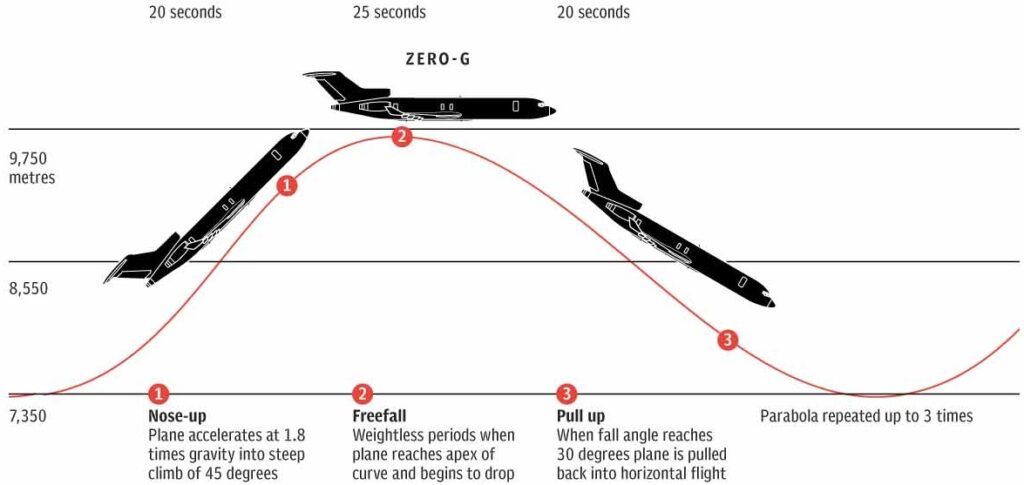Parabolic flights (often called “vomit comet” flights) provide an analog platform for microgravity research. Essentially, a reduced-gravity aircraft flies upward, then it curves like a parabola and flies downward so fast that the people and equipment inside experience microgravity for less than 30 seconds. This brief period of weightlessness allows researchers time to do experiments, though they have to work very fast to get them done in just a few seconds!

Astrobotanists Dr. Robert Ferl and Dr. Anna-Lisa Paul have flown experiments on many parabolic flights. They run the Space Plants Lab at the University of Florida, where they study the genetics of how plants respond to spaceflight. While 30 seconds might not seem like enough time for plants to sense and respond to microgravity, these astrobotanists have special technology to watch plants’ responses at a cellular level. Dr. Ferl and Dr. Paul use marker genes and imaging tools to watch the plants respond in real time. With chemical treatments they sometimes also preserve the plants during freefall, so they can examine those plants’ responses once they’ve landed. Ferl and Paul’s genetic research gives us insight into how we can grow plants in microgravity, and how we can genetically alter space plants to be better adapted to the spaceflight environment.
Parabolic flights are used for hardware testing too, but most hardware experiments are related to humans, not plants. Unlike drop towers, parabolic flights allow crew members to manually operate the experiments. While plant-related hardware can be tested in parabolic flights, these flights aren’t used for large crop experiments because 30 seconds is not long enough for plants to grow or develop in microgravity. Parabolic flights are much better suited to experiments like those from Dr. Ferl and Dr. Paul, who study plant cells and genetics.
There are many ways to study how plants react to space-like conditions without actually sending plants to space. Check out other ground-based research tools like clinostats, analog Mars greenhouses, and regolith simulant.

References:
- Microgravity research in plants
- A Case for Durational Research: Space Plants Co-Investigators Robert Ferl and Anna-Lisa Paul
- Parabolic Flight Induces Changes in Gene Expression Patterns in Arabidopsis thaliana
- Microgravity Research During Aircraft Parabolic Flights: The 20 ESA Campaigns
- Final Report of the Integrated Parabolic Flight Test: Effects of Varying Gravity, Center of Gravity, and Mass on the Movement Biomechanics and Operator Compensation of Ambulation and Exploration Tasks
- Transgenic Plant Biomonitors Or Spaceflight Exposure
